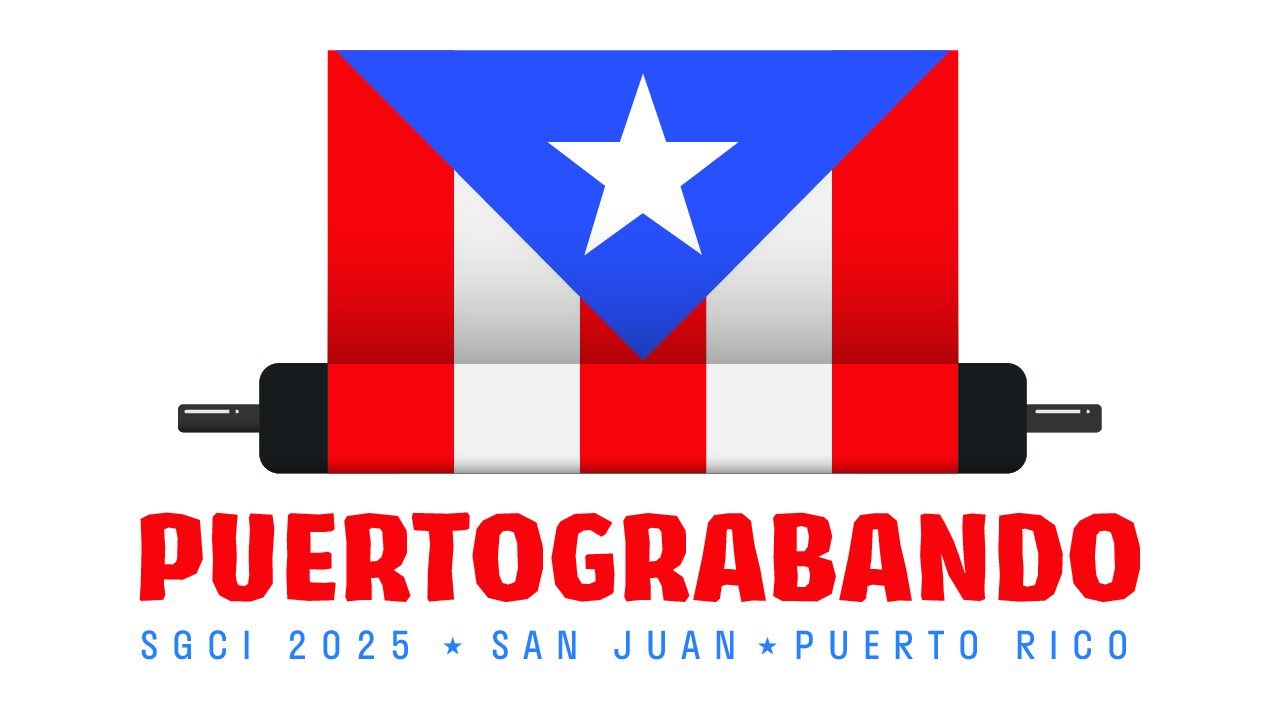
April 2-5, 2025
The Round 2 Call for Participation in the Puertograbando Programs has now closed. However, there are still plenty of exciting ways to get involved in the conference, such as participating in open portfolios, the membership print exchange, and our mentor-mentee program. We are diligently working to launch all of programs (including themed portfolios, panels, inkubators, and more) on our website, and we aim to have everything, along with registration, available by October 15.
Stay tuned for updates!
Let’s get ready for PUERTOGRABANDO 2025!!!
Set against the captivating backdrop of San Juan, Puerto Rico, we announce an inclusive conference experience for our members and Caribbean printmakers.
In addition to the hallmark features that define SGCI conferences—exhibits, panels, and demonstrations—San Juan, Puerto Rico offers an expanded array of delights, including its stunning landscape and captivating Caribbean printmaking demonstrations and exhibitions. Our new vision is to delve into and appreciate the vibrant history of Printmaking in the Caribbean through bilingual demonstrations and panel discussions in English and Spanish.
Embracing inclusivity, we intend to extend invitations to local Puerto Rican artisans to participate in our vendor fair, enhancing the event with an extraordinary art market.
With PuertoGrabando, we aim to infuse SGCI with an elevated international essence. Join us on this exhilarating journey as we collectively spread the ink within the global spirit of SGCI. We eagerly await your arrival!
In most Hispanic Cultures the word printmaking translates into grabado, a word whose literal translation means relief, etching, and engraving (also means recording, the more you know) all in one. A more accurate translation would be “something that physically affects the surface of something else.” This word defines the discipline of traditional printmaking, and the artist who proudly learns it then earns the title of “grabador”. In spanish, when we end nouns with -ando/-endo, you can transform them into a present continuous verb. For example: trabajar (to work) would become trabajando (working). Therefore, “Grabando” becomes the activity of being currently engaged in printmaking. Puerto, the first half of the name of the country Puerto Rico, means port in english. When combining both Puerto and Grabando, the phrase becomes an invitation to come to the port where printmaking is happening, as well as a way of referencing the island and it being the home of the next SGCI conference.
Conference Locations / Espacios del Congreso
Programming will take place at the University of Puerto Rico, Río Piedras Campus, the Escuela de Artes Plásticas y Diseño, Liga de Arte de San Juan, Museo de Las Américas, Casa del Libro, and the Hilton Caribe, among other venues.
Eventos de la programación también serán llevados a cabo en la Universidad de Puerto Rico, Recinto de Río Piedras, la Escuela de Artes Plásticas y Diseño, Liga de Arte de San Juan, Museo de Las Américas, Casa del Libro, y el Hilton Caribe, entre otros lugares.
